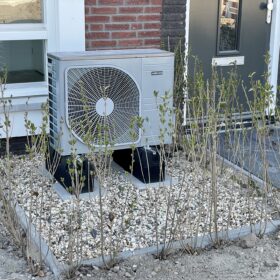Novel fuel cell tech based on silicon-based bipolar plates
Australia’s Clean Energy Finance Corporation has backed a hydrogen fuel cell developer $7 million to support an innovative form of technology using silicon-based bipolar plates.
Dutch scientists assess consumers’ willingness to pay for renewable heating
A survey of 1,797 residents was used to determine the willingness to pay for low-carbon residential heating in the Netherlands. On average, respondents were willing to pay a premium of 33% for electricity-based heating. Policy recommendations were also provided as part of the study.
Direct vs. indirect coupling in PV-driven hydrogen generation
Researchers in Spain have made a comparative analysis of annual PV-powered hydrogen production for direct and indirect configurations and have found that indirect systems not only produce more hydrogen but also that they show higher resilience to module power losses.
Israel presents 2050 net-zero roadmap envisaging up to 77% solar share
The Israeli Ministry of Energy and Infrastructure has presented three scenarios for its 2050 green goals, changing in accordance with developments in solar, hydrogen, and nuclear power production. In the most solar-focused scenario, the country would have a PV capacity of 108 GW.
Offgrid PV-driven hydrogen vs. standalone solar-plus-storage
A German research team has compared the economic performance of an offgrid PV-electrolyser-fuel cell system with that of a standalone solar-plus-storage counterpart in a building in Niger. Its analysis showed that decentralized PV-driven hydrogen could achieve considerable lower levelized cost of energy and levelized cost of storage than the PV-battery system, with these values reaching €0.12 ($13.1)/kWh and €0.35/kWh, respectively.
Floating photovoltaics for hydrogen generation, storage
New research from the UK shows that Oman could utilize a floating PV farm at the Wadi Dayqah Dam for hydrogen generation. The scientist said the project is technical viabile, although only with advancements in hydrogen energy storage technology could make it economically feasible.
Spain unveils €2.3 billion support program for hydrogen development, renewable energy sectors
The country’s ecological transition ministry has published the regulatory bases of aid to large hydrogen clusters, industrial capacities in solar, wind energy, heat pumps, batteries and electrolysers; innovative renewable energy, storage and heat pump projects; and energy communities.
Fraunhofer IEG building new sector coupling test facility to increase electrolyzer, heat pump efficiencies
The city of Zittau has now granted the building permit for the test facility, which is to be constructed by the beginning of next year. The aim is to develop cost-effective electrolyzers for the production of green hydrogen, in which the by-products oxygen and heat can be optimally used.
Ohmium opens second electrolyzer gigafactory in India
Ohmium has started operating a second electrolyzer gigafactory in India. The 2 GW facility near Bengaluru is expandable to 4 GW. It will produce polymer electrolyte membrane (PEM) electrolyzers to meet rising demand for green hydrogen.
German firm hits energy independence with solar, batteries, hydrogen
Esysteme21 has built a 100% self-sufficient energy system with photovoltaics, hydrogen and battery storage. The German solar company describes the concept as a solution for medium-sized enterprises.










